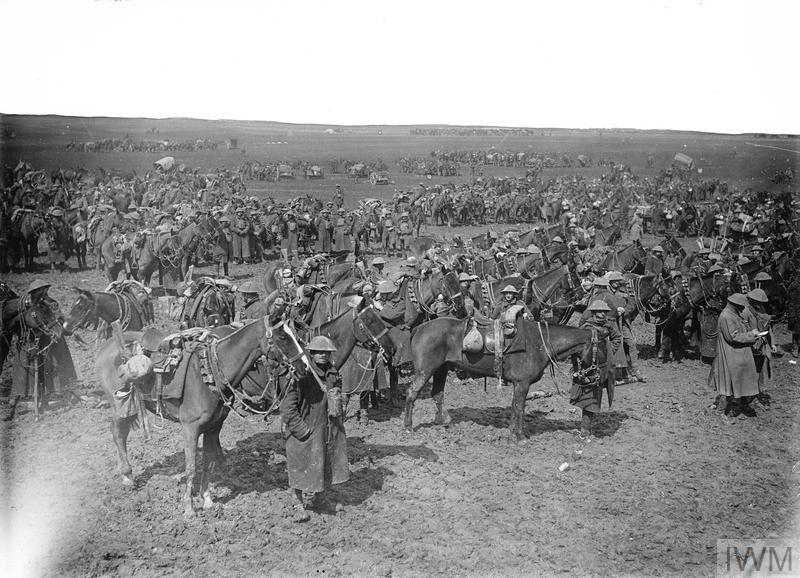Arras, 1917
The Battle of Arras was a British offensive on the Western Front during World War I. From 9 April to 16 May 1917, British troops attacked German defences near the French city of Arras on the Western Front. The British achieved the longest advance since trench warfare had begun, surpassing the record set by the French Sixth Army on 1 July 1916. The British advance slowed in the next few days and the German defence recovered. The battle became a costly stalemate for both sides and by the end of the battle, the British Third and First Army had suffered about 160,000 casualties and the German 6th Army about 125,000.
The Honour is borne on the Guidon of the 3rd Hussars.
Scarpe
The Battle of the Scarpe refers to three battles that occurred during the Arras Offensive between 9 April and 4 May 1917.
The Honour was awarded to the 3rd Hussars.
Detail
Once again, the cavalry was warned for ‘the gap’. The 3rd Hussars, who had spent the first two months of the year labouring with picks and shovels, rode towards the battle area on the 5th of April; and four days later, with the 2nd, 3rd and 4th Cavalry Divisions, they followed the attack of Allenby’s Third Army, south of the River Scrape.
The major British assault of the first day was directly east of Arras, with the 12th Division attacking Observation Ridge, north of the Arras—Cambrai road. After reaching this objective, they were to push on towards Feuchy, as well as the second and third lines of German trenches.
It was during this time that the 3rd Hussars provided patrols; but during these days and nights, in fierce snowstorms, the men and their horses endured miserable discomfort. Each day they picked their way along the prepared cavalry track to Telegraph Hill, on the old German second line, where they waited through the day for the break that never came; and each evening they returned to Wailly, three miles south-west of Arras.
It was lucky that the massed cavalry was not heavily shelled, as there was no room for movement, and the only escape was by the long, narrow tracks, a foot deep in slippery mud.
Most of the objectives, including Feuchy village, had been achieved by the evening of 10 April though the Germans were still in control of large sections of the trenches between Wancourt and Feuchy, particularly in the area of the heavily fortified village of Neuville-Vitesse.
After the territorial gains of the first two days, a lull followed as the immense logistical support needed to keep armies in the field caught up with the new realities. Battalions of pioneers built temporary roads across the churned up battlefield; heavy artillery (and its ammunition) was manhandled into position in new gun pits; food for the men and feed for the draught horses was brought up and casualty clearing stations were established in readiness for the inevitable counter-attacks.
At 04:45 on 23 April, following two days of poor visibility and freezing weather, British troops of the Third Army attacked to the east along an approximate 9 mile front from Croisilles to Gavrelle on both sides of the Scarpe.
The 51st Division attacked the northern side in heavy fighting on the western outskirts of Roeux Wood and the chemical works. On their left, the 37th Division attacked the buildings west of Roeux Station and gained the line of their objectives on the western slopes of Greenland Hill, north of the railway. On the left of the main British attack, the 63rd Division made rapid progress against Gavrelle and secured the village. To the south of the Scarpe and east of Monchy-le-Preux, the 29th Division gained the western slopes of the rising ground known as Infantry Hill.
After securing the area around Arleux at the end of April, the British determined to launch another attack east from Monchy to try to break through the Boiry Riegel and reach the Wotanstellung, a major German defensive fortification.
With this objective in mind, the British launched another attack using regiments from the 4th Division near the Scarpe on the 3rd of May. However, no significant advances were made and the attack was called off the following day after incurring heavy casualties.
Although this battle was a failure, the British learned important lessons about the need for close liaison between tanks, infantry and artillery, which they would use in the Battle of Cambrai.


